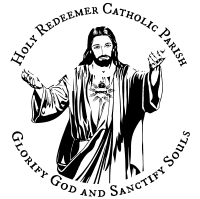The Eucharist, Part 19
Jesus Christ: Yesterday, Today, and Forever ~
Today we continue our twenty part series on the Eucharist. In case you missed the first three, you can find them here. This is in keeping with Archbishop Etienne’s pastoral letter on the Eucharist that you can find here (in case you missed it). Enjoy.
May God Bless You,
Fr. Thomas Nathe
Trent Horn, 20 Answers – The Eucharist. Catholic Answers Press. 2015
Get your own copy from Catholic.com
Question #12:
Have there been miracles involving the Eucharist?
Although there have been no miracles involving the Eucharist that the Church has required Catholics to believe as articles of faith, there have been several reports of miracles that the Church has investigated and deemed appropriate for Catholics to accept. Here are just a few of them:
Lanciano, Italy, 8th century: During Mass the consecrated bread and wine became actual flesh and blood. The host and globules of blood were preserved and are on display to this very day. A team of researchers in the 1970s and ‘80s examined the host and determined that the flesh came from a human heart and the blood was type AB.
Bolsena-Orvieta, Italy, 1263: A German priest named Peter of Prague was struggling with the doctrine of transubstantiation when suddenly, while he was saying Mass, blood slowly began to emerge from the host at the moment of Consecration. Pope Urban IV called for an investigation into the matter and declared it to be authentic. He later commissioned St. Thomas Aquinas to compose both the Office for the Mass and the Liturgy of the Hours for a feast called Corpus Christi, which would be dedicated to the Eucharist. Even today, during the feast of Corpus Christi the cathedral in Orvieto exposes the linen stained with the blood from the host held by Peter of Prague.
Avignon, France, 1433: After several days of heavy rain, the entire city of Avignon was flooded - except for a path leading into the church where the Eucharist was being kept for perpetual adoration. The religious brothers who run the small church still celebrate this miracle by exposing the sacrament and singing a chant from the Canticle of Moses, which was originally sung when God miraculously kept the waters of the Red Sea at bay during the Exodus.
Eten, Peru, 1649: Fr. Jerome Silva saw an image of a child on the eucharistic host, and an apparition of the divine child Jesus was also reported to have appeared to several people. This miracle is celebrated in Eten every year on July 12.
Trivandrum, India 2001: Fr. Johnson Karoor saw three dots and later a human face on the Eucharist while he was saying Mass. In an interview, Fr. Karoor said, “I didn’t have the strength to speak anything to the faithful. I stood aside for some time. I couldn’t control my tears. We had the practice of reading Scripture and reflecting on it during adoration. The passage that I got that day as I opened the Bible was John 20:24-29, Jesus appearing to St. Thomas and asking him to see his wounds.”
Finally, it is important to remember that at every Mass a miracle occurs even if we can’t perceive it. That’s because after Consecration the substance of the bread and wine ceases to exist and is replaced with the substance of Christ’s body and blood.

